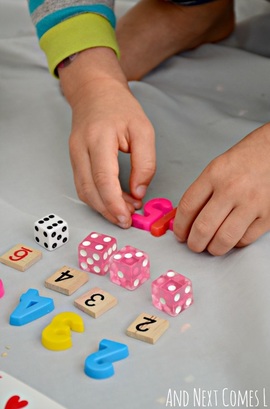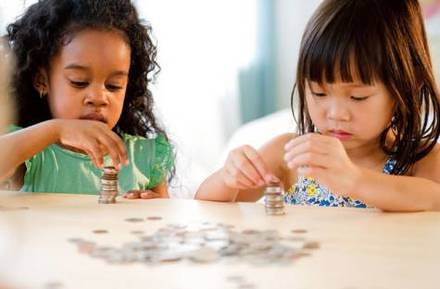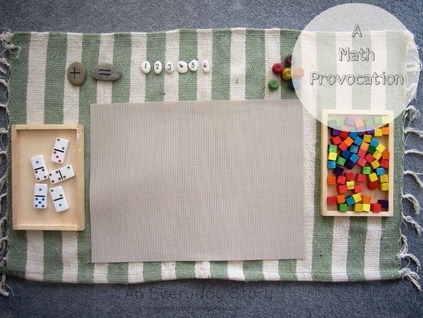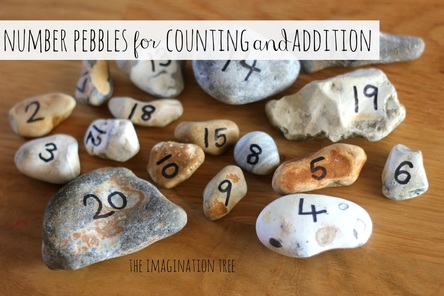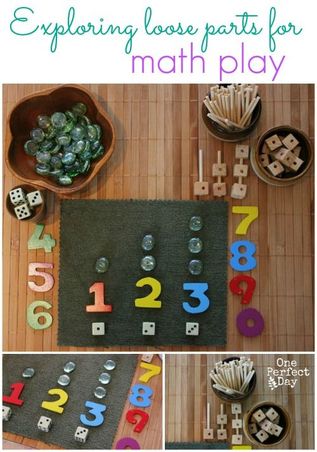Justifying Play-Based Learning
What is 1:1 correspondence?
One to one correspondence is the ability to match an object to the corresponding number and recognise that numbers are symbols to represent a quantity. Young children often learn to count without having an understanding of one to one correspondence (Kearns, 2010). This means that while they can count they may not understand the meaning or value of the numbers. Numbers and symbols are abstract for children so 1:1 correspondence is the connection between the symbol, the language and the quantity (Kearns, 2010).
Why is it important for children to learn?
1:1 correspondence is crucial to learn as it is used in our every day lives, such as counting money or preparing food for people. Most children can rote count fairly easily, however this demonstrates memory and not the understanding of concept of quantity. Therefore, it is important that children are enabled to count, understanding what they are doing and what the numbers mean. Significantly, familiarity builds children's confidence with mathematics and is a crucial skill for being able to perform calculations in the future (Math and Number Awareness, (n.d.). It is also necessary for reading as children must recognise what that words are separated by space and have meaning (McCarthy, 2009).
Establishing whether children have grasped the concept of 1:1 correspondence can be done by asking them to count objects; if the child coordinates their counting with the objects by collecting or pointing to them, they have an understanding of 1:1 correspondence. However, if their counting is random and they can not align the numbers with the objects, they require further teaching and opportunities to practice. Have children match the written numeral to a number of objects.
Establishing whether children have grasped the concept of 1:1 correspondence can be done by asking them to count objects; if the child coordinates their counting with the objects by collecting or pointing to them, they have an understanding of 1:1 correspondence. However, if their counting is random and they can not align the numbers with the objects, they require further teaching and opportunities to practice. Have children match the written numeral to a number of objects.
Activity 1: Dice games and activities
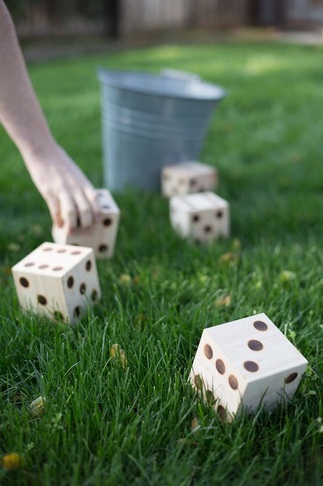 Source: momtastic.com
Source: momtastic.com
Dice games and activities are fantastic for developing 1:1 correspondence as children learn that the number rolled relates to the number of actions or objects they have to take. Importantly, these games can be easily adapted to suit children's interests such as using dinosaur characters on the board or having themes for the games that are interesting to the children. Children can also have a role in creating the rules or themes of games which is fantastic for thinking and communication skills. Encourage children to make their own games, such as stacking the number of blocks that is rolled on the dice and seeing who can get the tallest without it collapsing.
Examples of indoor dice activities: Rolling the dice and then going forward the corresponding number of spaces on a board as a race to the end; picking up the corresponding number of objects to the number rolled and at the end of the game count the objects accumulated by each player and whoever has the most wins. For example, children could dress up as astronauts and collect the corresponding amount of moon rocks from the pretend moon surface. Children may have to collect concrete items and then count them at the end see who got most. Children can keep a tally throughout the game or document data from the dice rolls to find which is the most common number to be rolled. Literacy can also be incorporated by having letters on the board and children have to identify the letter in order to collect an object.
Dice games can easily be created specifically for playing outside and can involve more gross-motor actions for children. Outdoors, the games can be played with giant "yard dice" and children can create their own outdoor games.
Examples of outdoor dice activities: Fishing out the corresponding number of ducks from a little pool. Rolling a dice and hopping the corresponding number of steps on hopscotch. Children can draw their own hopscotch and make it more intricate, or change the actions children have to do such as hopping, twirling and clapping.
Examples of indoor dice activities: Rolling the dice and then going forward the corresponding number of spaces on a board as a race to the end; picking up the corresponding number of objects to the number rolled and at the end of the game count the objects accumulated by each player and whoever has the most wins. For example, children could dress up as astronauts and collect the corresponding amount of moon rocks from the pretend moon surface. Children may have to collect concrete items and then count them at the end see who got most. Children can keep a tally throughout the game or document data from the dice rolls to find which is the most common number to be rolled. Literacy can also be incorporated by having letters on the board and children have to identify the letter in order to collect an object.
Dice games can easily be created specifically for playing outside and can involve more gross-motor actions for children. Outdoors, the games can be played with giant "yard dice" and children can create their own outdoor games.
Examples of outdoor dice activities: Fishing out the corresponding number of ducks from a little pool. Rolling a dice and hopping the corresponding number of steps on hopscotch. Children can draw their own hopscotch and make it more intricate, or change the actions children have to do such as hopping, twirling and clapping.
|
Activity 1: Australian Curriculum connections
Mathematics Establish understanding of the language and processes of counting by naming numbers in sequences, initially to and from 20, moving from any starting point (ACMNA001) Connect number names, numerals and quantities, including zero, initially up to 10 and then beyond (ACMNA002) Represent practical situations to model addition and sharing (ACMNA004) |
Early Years Learning Framework connections
Outcome 1: Children have a strong sense of identity; Children develop their emerging autonomy, inter-dependence, resilience and sense of agency. Children learn to interact in relation to others with care, empathy and respect. Outcome 3: Children have a strong sense of wellbeing; Children become strong in their social and emotional wellbeing. Outcome 4: Children are confident and involved learners; Children develop dispositions for learning such as curiosity, cooperation, confidence, creativity, commitment, enthusiasm, persistence, imagination and reflexivity. |
Activity 2: Loose parts
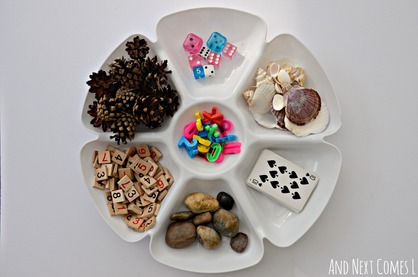 Source: www.andnextcomesl.com
Source: www.andnextcomesl.com
Provide loose parts for children to practice 1:1 correspondence by sorting objects into the corresponding numbers. Items such as buttons, dice, a deck of cards (remove Jack, King and Queen or keep to perhaps represent zero), glass pebbles. Natural objects are particularly good such as stones, flowers with petals, sticks or various materials with numbers on them such as jars, honkey nuts and stones painted like dominoes with the numeral as well on the other side. Objects that partition items are also useful such as muffin trays, ice block trays, jars or egg cartons. Leave children to explore or sit with them and use intentional language and open-ended questioning to extend their thinking and enhance their learning.
|
Activity 2: Australian Curriculum connections
Mathematics Connect number names, numerals and quantities, including zero, initially up to 10 and then beyond (ACMNA002) Subitise small collections of objects (ACMNA003) Compare, order and make correspondences between collections, initially to 20, and explain reasoning (ACMNA289) Early Years Learning Framework connections Outcome 4: Children are confident and involved learners; Children develop dispositions for learning such as curiosity, cooperation, confidence, creativity, commitment, enthusiasm, persistence, imagination and reflexivity. Children develop a range of skills and processes such as problem solving, inquiry, experimentation, hypothesising, researching and investigation. Children transfer and adapt what they have learned from one context to another. Outcome 5: Children are effective communicators; Children interact verbally and non-verbally with others for a range of purposes. |
What to avoid when teaching 1:1 correspondenceAvoid worksheets as they are not concrete and cannot be manipulated, which supports children's understanding. Worksheets are not interesting, engaging or open-ended and do not enable children to think creatively or use their higher order thinking skills.
Opportunities to practise in their environmentIncidental learning is important as children learn the importance of mathematics as they are able to recognise the everyday context where it is used.
|
How to teach 1:1 correspondence effectively
It is important to provide experiential, hands-on activities for children when learning mathematics. This is because being able to hold and manipulate the objects supports children's understanding of core mathematical concepts before they move onto abstract and mental mathematics. It is also important to make math play interesting and enjoyable so children develop a positive attitude toward math and not an aversion to it. Use natural and man-made, open-ended and concrete items that are easily handled and manipulated such as honkey nuts, stones, blocks or buttons.
Opportunities to practise with explicit teachingFor more explicit teaching of 1:1 correspondence for children who require additional support or to provide a greater depth of learning, explicit teaching of the concepts through activities may be required. This can be done through whole-group mini lessons or in small groups depending on the activity and the needs of students. See examples below:
|
How does addition and subtraction support 1:1 correspondence understanding?
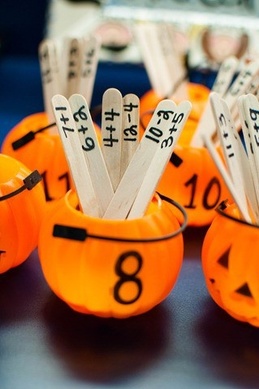 via Pinterest
via Pinterest
Children begin to recognise that numbers represent quantity as they gain experience with adding and subtracting objects. They understand that adding objects or taking them away changes the original number and understand that numbers are representations for amounts.
Opportunities to practise
Opportunities to practise
- Incorporate sums into every day authentic contexts. For example, use number stories during morning tea e.g. I had 4 pieces of apple but I ate 2 pieces so how many do I have left?
- Read books which involve number stories such as 5 little ducks. Write and state the number story and number sentence for children to see, such as there were five little ducks and one went away, which leaves 4. So, 5 - 1 = 4.
- Story stones that relate to a book involving number stories; this enables children to retell the stories with concrete objects, enhancing their understanding of 1:1 correspondence.
- Teach addition with popsticks/objects in jars e.g. jars with the answers on them and popsticks with the sums.
Examples of Practice
|
|
|
For more information on 1:1 correspondence visit the references for this page:
Kearns, K. (2010). Frameworks for Learning and Development. (2nd ed). Frenchs Forest, NSW: Pearson Australia.
Math and Number Awareness. Retrieved from http://www.schoolsparks.com/early-childhood-development/math-number-awareness
McCarthy, C. (2009). Understanding One-to-One Correspondence. Retrieved from http://www.schoolfamily.com/blog/uncategorized/2009/06/25/understanding-one-to-one-correspondence/
Additional Resources
http://www.oneperfectdayblog.net/2013/09/16/preschool-math-games-loose-parts/- Fantastic ideas for constructing 1:1 correspondence experiences with loose parts.
http://www.andnextcomesl.com/2014/08/reggio-inspired-preschool-math-tray.html -fantastic open-ended math provocations.
Math and Number Awareness. Retrieved from http://www.schoolsparks.com/early-childhood-development/math-number-awareness
McCarthy, C. (2009). Understanding One-to-One Correspondence. Retrieved from http://www.schoolfamily.com/blog/uncategorized/2009/06/25/understanding-one-to-one-correspondence/
Additional Resources
http://www.oneperfectdayblog.net/2013/09/16/preschool-math-games-loose-parts/- Fantastic ideas for constructing 1:1 correspondence experiences with loose parts.
http://www.andnextcomesl.com/2014/08/reggio-inspired-preschool-math-tray.html -fantastic open-ended math provocations.

